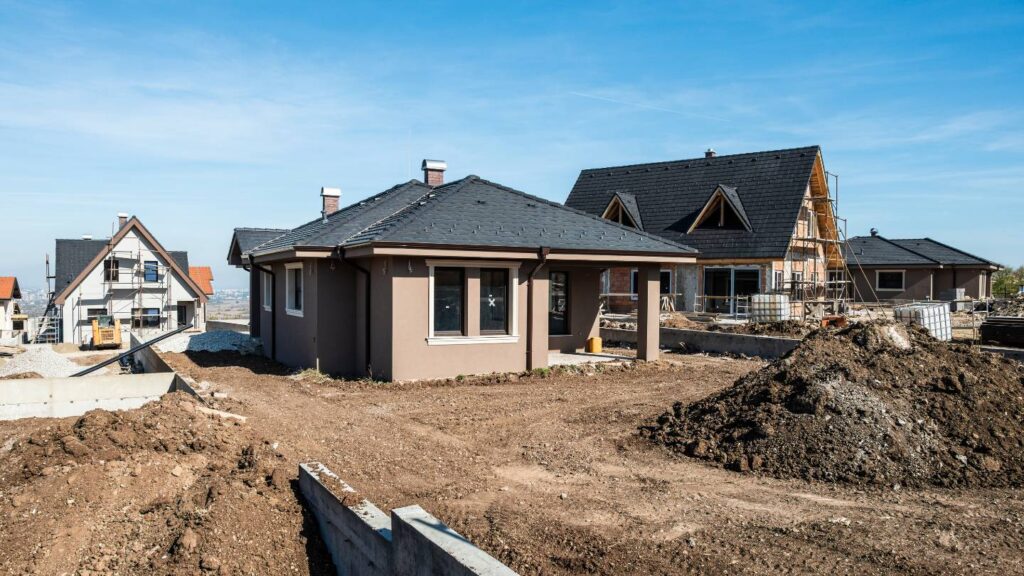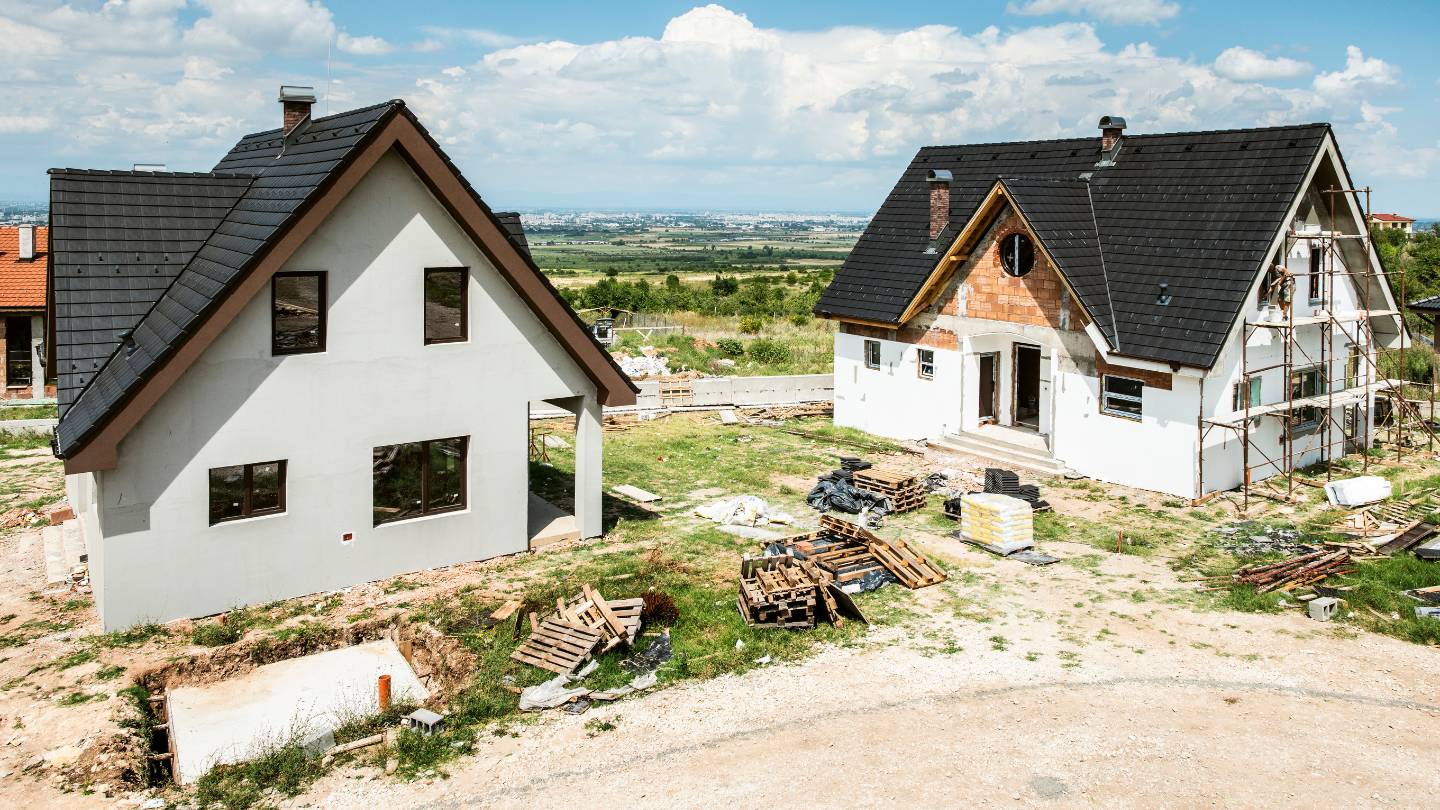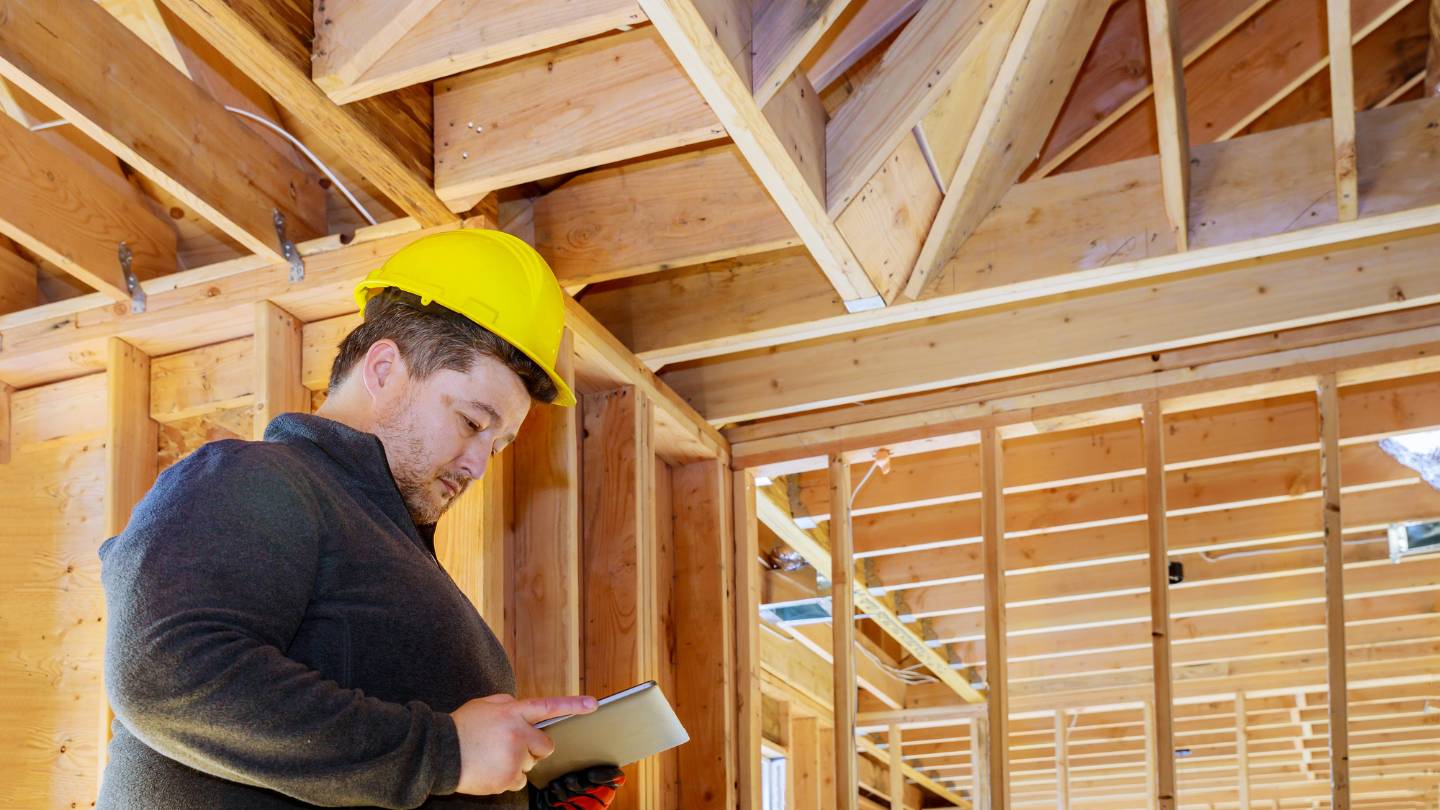It is impossible to exaggerate the importance of natural light in the field of custom house design. The importance of natural light is becoming more apparent as home design trends shift and people look for ways to create unique places that complement their lifestyle while also being mindful of the environment.
Incorporating natural light into custom house designs is important for many reasons; this article will go over some of them, including health and wellness, energy efficiency, aesthetics, and practical design tactics.
Come along as we explore the many ways in which clever use of natural light can improve a home's aesthetics, health, and sustainability while also creating an environment that is uniquely suited to each individual's needs.
Natural Light
Simply said, natural light is light that does not artificially create its own illumination, the most prevalent of which is the Sun. This stands in contrast to the artificial light that is usually generated by electrical devices like lamps.
During the day, we are bathed in natural light, which spans the visual spectrum from red to violet. Plants can't do photosynthesis without natural light, which has several health benefits and is an excellent source of vitamin D. On cloudy evenings, the moonlight also serves as a natural light source. Fire is another option.
Natural light has several positive effects on human health, including regulating the circadian rhythm, enhancing focus, and establishing an overall relaxing atmosphere. It helps keep buildings free of mould and mildew, which thrive in gloomy places, and it can lower energy use compared to artificial light.
Windows and other forms of glass allow natural light to enter a structure through the interior. 'Daylight systems' that are more intricate gather natural light and direct it into the core of structures. They gather light from collectors on top of the building and send it down to diffusers within.
In the summer, when temperatures soar, and glare obscures eyesight, construction workers face the added danger of overexposure to natural light.
One kind of easement is the "right to light," which protects the ability to get enough natural light into a structure for "ordinary" purposes like furnishing, lighting, or occupant comfort. There are no universally accepted standards for light levels; rather, courts decide each case individually.
Significance Of Natural Light In Design
Keeps Our Body-Clock Synced
However, how exactly can exposure to natural light promote good health? Natural light not only helps us get enough vitamin D, but it also harmonises with our Circadian rhythm, which is our internal clock. For example, while planning a workplace, it's important to let plenty of natural light and airflow through. A well-planned office that makes use of natural light, free of glare and heat, is an energising and motivating place to be.
One factor in reducing the likelihood of Sick Building Syndrome is the amount of natural light that enters a space. Poor ventilation and other working conditions contribute to SBS, which in turn causes headaches and respiratory difficulties among workers. Studies demonstrate that natural illumination can aid in the prevention of Sick Building Syndrome in buildings, even though SBS primarily focuses on natural ventilation.
Natural Anti-Bacterial Properties
Having one's kitchen facing east or west is recommended for a reason. Because of the cooling effect of the afternoon sun and the beneficial sunshine it provides, the east side of the house is usually the best choice for a kitchen or breakfast nook. Alternatively, if you have a longer roof overhang, you can position your kitchen along the west side, which becomes the hottest in the afternoon, to avoid glare and heat buildup.
Mould and mildew are less likely to grow in kitchens that are positioned towards the sunniest parts of the house. Plenty of natural light is ideal for disinfecting bathrooms and other moist areas since it eliminates germs and fungi.
Heightens Our Serotonin Levels
Similar to other advantages of sunlight, scientific evidence supports the idea that exposure to natural light boosts mood and alleviates the so-called winter blues. An Australian study found that levels of serotonin, often called "happy chemicals," are higher on sunny days than on gloomy ones. In addition to regulating your mood, serotonin promotes wound healing, alleviates nausea, and keeps your bones healthy.
Visually Elating
More mental processing power than all of our other senses put together goes towards our eyes. A person's emotional health is influenced by their visual perception, which in turn influences their memory and decision-making.
Natural light is more effective than artificial lighting at revealing a material's intricate pattern and hue. Our general health can benefit substantially from vistas that are both aesthetically pleasing and uplifting.
Keeps You Warm
Solar energy is most readily apparent since it powers our bodies and keeps us warm. Natural light has a calming effect on the human senses as well as the built environment. A room illuminated by natural light streaming in through the windows is naturally more pleasant and energetic than one that is completely dark.
How To Design A Home To Maximise Natural Light
You can easily get these advantages, which is great news. It is possible to make your home's layout take advantage of natural light to its fullest potential. Some things about your home can't be modified later, so it's crucial to think about these things when you're starting the design process.
Orientate Your Home To The Sun
At the outset of the construction process, you should think about how you want your house to face. Even if your home's orientation may be constrained by the size and placement of your block, you can still make the most of the natural lighting by paying attention to the Sun's position throughout the day.
A house's longest side should face north or south as a general guideline. In the mornings and evenings, the Sun can illuminate and warm the sides of your home that face east and west. There are still methods to make use of natural light, even if nearby structures prevent it.
To maximise the effect of natural light, arrange your home's layout such that the rooms you use most, whether they are communal areas or your sleeping quarters. The bedrooms should also face eastward to make the most of the natural light first thing in the morning.
Windows And Doors
The most effective means of capturing natural light are the windows and doors you install, provided that you are not free to alter the orientation of your house. Sunlight can easily enter your home through large, transparent windows, skylights, and glass doors.
The centre of a house is often the worst place for a fire to start. One option to let more natural light into a building is to place skylights over common areas like halls, stairwells, and corridors. To get the most out of natural light without sacrificing seclusion, consider installing high-level windows in your bedrooms and baths.
Using The Right Paint Colors
Another way to make your home seem brighter is to change the colour of the walls and ceilings. Lighter colours reflect sunlight, whereas darker colours soak it up. To find out how much light a colour will absorb or reflect, scientists use its Light Reflectance Value (LVR). Depending on the colour, LVR can be almost 100% for white and almost 0% for black.
Both pure white and white with varying undertones are great choices for modern homes because they let light in and make the most of natural light. To make your home seem brighter and more spacious, paint the ceiling a little lighter than the walls and use white trim around the windows.
Control Natural Light With Custom Window Treatments
A more pleasant, well-lit home is just one of many advantages of natural light. With the help of window coverings, you may regulate the duration and quantity of natural light entering your home. It is even possible to programme some bespoke window coverings to open and close automatically at certain times of the day. Custom window treatments not only help you regulate the amount of light coming in, but they may also improve privacy, match your decor, and add style to your space.
Custom Shutters
You may adjust the quantity of light that enters your home by opening and closing the functional panels that comprise shutters. Premium bespoke shutters also provide consistent seclusion at all times, which is a major plus. Wood and polyvinyl chloride (PVC) are two of the most common materials for shutters.
Those seeking to elevate the ambience of their houses can't go wrong with custom wood shutters. In areas like sunrooms, bathrooms, and kitchens, where moisture levels tend to be higher, PVC shutters might be a better choice.
Premium Shades
Automating the opening and closing of your window coverings is now possible with motorised blinds. You can arrange for them to stay open during the times when the Sun is at its brightest, thanks to this feature. When the Sun goes down or whenever you want some extra privacy, you may programme it to close the shades automatically.
Popular varieties of shades include woven, Roman, room-darkening, and dual shades. An adaptable window treatment, custom window shades enable you to control the amount of light coming in while still letting in enough natural light when you want to relax in the Sun.
Custom Drapes
When drawn back, drapes are a classic decorative window treatment that lets light flood your home. Elevate any room with premium window drapes that keep heat in during winter and cool air out throughout summer. Every area in your house will be more comfortable thanks to the ability of window drapes to keep the temperature controlled. Drapes are also great for achieving that sweet spot between letting in natural light and hiding it when you need to.
An Important Consideration In Modern Design
By letting in enough natural light, you can make your home seem bigger and more integrated with its surroundings, all while enhancing its aesthetics, adding texture, and creating visual interest within.
Your architect should give careful consideration to the site's orientation and the interior programme spaces if you want to make the most of this resource. Because of this, they will be able to create a plan that maximises the amount of natural light entering your bespoke house at different times of the day, bringing you happiness in the form of vitamin D.
Conclusion
Natural light is a crucial aspect of custom home design, as it promotes health, wellness, energy efficiency, aesthetics, and practical design tactics. It is a natural light source that does not artificially create its own illumination, such as the Sun. Natural light has numerous health benefits, including regulating the circadian rhythm, enhancing focus, and creating a relaxing atmosphere. It also helps keep buildings free of mold and mildew, which thrive in gloomy places.
The "right to light" allows for the use of natural light in structures for various purposes, such as furnishing, lighting, or occupant comfort. Courts decide each case individually, and there are no universally accepted standards for light levels.
Natural light also helps maintain a healthy body-clock by regulating the circadian rhythm and reducing the likelihood of Sick Building Syndrome. It also has anti-bacterial properties, such as preventing mold and mildew growth in kitchens and disinfecting bathrooms.
Sunlight also boosts serotonin levels, which are essential for wound healing, nausea, and bone health. Visually elating spaces with aesthetically pleasing and uplifting views can significantly benefit emotional health.
Lastly, natural light keeps us warm by calming the human senses and the built environment. Overall, the use of natural light in custom home design is essential for overall well-being and sustainability.
By letting in enough natural light, your home can feel larger, more integrated with its surroundings, enhance aesthetics, add texture, and create visual interest.
Content Summary
- The significance of natural light in custom home design cannot be overstated.
- Australian homes are increasingly designed to align with individual lifestyles and environmental mindfulness.
- Health, energy efficiency, aesthetics, and practical design are key considerations in incorporating natural light.
- Natural light, derived from the Sun, is distinct from artificial illumination created by electrical devices.
- Exposure to natural light provides health benefits, including vitamin D synthesis and regulating the circadian rhythm.
- Moonlight and fire are alternative natural light sources, contributing to a relaxing atmosphere.
- Windows and glass allow natural light into structures, while "daylight systems" intricately direct light into building cores.
- Construction workers face overexposure risks to natural light during summer's glare and high temperatures.
- "Right to light" easements protect structures' access to sufficient natural light for ordinary purposes.
- Natural light helps prevent Sick Building Syndrome by improving ventilation and overall working conditions.
- Exposure to natural light boosts serotonin levels, promoting mood, wound healing, and overall well-being.
- Visual perception, influenced by natural light, impacts emotional health, memory, and decision-making.
- Sunlight, with its calming effect, powers our bodies and enhances the pleasantness of illuminated rooms.
- Home design can maximize natural light's benefits for aesthetics, health, and sustainability.
- The orientation of a home is crucial, with north or south-facing sides recommended for optimal sunlight.
- Room layout should prioritize the placement of commonly used areas to maximize natural light exposure.
- Strategic window and door placement allows sunlight to enter homes, contributing to a well-lit environment.
- Skylights over common areas and high-level windows in bedrooms enhance natural light without sacrificing privacy.
- Wall and ceiling colors impact natural light reflection, with lighter tones recommended for brightness.
- Light Reflectance Value (LRV) measures how much light colors absorb or reflect, influencing interior brightness.
- Custom window treatments, like shutters, offer control over the duration and quantity of natural light.
- Wood and PVC shutters provide both light control and consistent seclusion in different areas of the house.
- Motorised blinds offer automation, allowing control over sunlight exposure during different times of the day.
- Premium shades, including woven, Roman, and dual shades, provide versatility in controlling natural light.
- Custom drapes, when drawn back, allow natural light to flood the home, enhancing visual appeal.
- Drapes also contribute to temperature control, making rooms more comfortable throughout the year.
- Incorporating natural light in home design creates an illusion of larger and more integrated spaces.
- Australian architects prioritize site orientation and interior spaces to maximize natural light throughout the day.
- A well-planned office with natural light, devoid of glare and heat, is energizing and motivating.
- East or west-facing kitchens benefit from the cooling effect of the sun, reducing the likelihood of mould.
- Sunniest areas in a house are ideal for disinfecting bathrooms, preventing the growth of germs and fungi.
- Natural light exposure supports the prevention of Sick Building Syndrome, addressing headaches and respiratory issues.
- Australian studies show higher serotonin levels, or "happy chemicals," on sunny days, influencing mood positively.
- Visual elation from natural light enhances overall mental well-being, influencing memory and decision-making.
- Solar energy from natural light powers the human body, contributing to a calming effect on the senses.
- Designing a home to maximize natural light involves thoughtful consideration during the initial design process.
- Home orientation, window placement, and paint colors are key elements in optimizing natural light benefits.
- Premium wood shutters offer both light control and elevated aesthetics in areas like sunrooms and kitchens.
- Motorised blinds allow automated control over sunlight exposure, enhancing convenience and privacy.
- Custom window shades offer flexibility in controlling natural light while maintaining privacy.
- Drapes, when drawn back, create a classic look while allowing natural light to fill the home.
- Temperature-controlled drapes contribute to a comfortable environment in every area of the house.
- Maximizing natural light in home design creates a sense of integration with the surrounding environment.
- Architects play a crucial role in planning homes that capture natural light at different times of the day.
- Vitamin D happiness is achieved by maximizing natural light exposure in bespoke house designs.
- A well-planned office with natural light contributes to an energizing and motivating work environment.
- Eastward-facing bedrooms benefit from the morning sunlight, enhancing the waking experience.
- Strategic window placement, including high-level windows, balances natural light and privacy.
- Light-colored walls and ceilings, complemented by white trim, enhance the brightness of a home.
- Australian homes prioritize natural light to create spaces that are not only functional but also visually appealing.
Frequently Asked Questions
Natural light is crucial in custom home design for several reasons. It enhances the overall aesthetic appeal of the space, positively influences mood and productivity, contributes to energy efficiency, and supports the well-being of the occupants by aligning with natural circadian rhythms.
Natural light has been linked to various health benefits, including improved mood, increased Vitamin D synthesis, and better sleep quality. Exposure to natural light helps regulate the body's internal clock, promoting a sense of well-being and overall health.
Yes, natural light significantly contributes to energy efficiency. By reducing the need for artificial lighting during the day, it lowers electricity consumption. Additionally, thoughtful design can harness passive solar energy, further decreasing the reliance on heating and cooling systems.
Strategic placement of windows and skylights, consideration of building orientation, and the use of reflective surfaces are practical design strategies. These approaches maximise natural light penetration, creating well-lit and inviting living spaces.
Natural light can be customised by tailoring its intensity and distribution based on the specific function of each space. Living areas might benefit from ample daylight, while bedrooms may require a balance of natural and artificial lighting for different times of the day.




